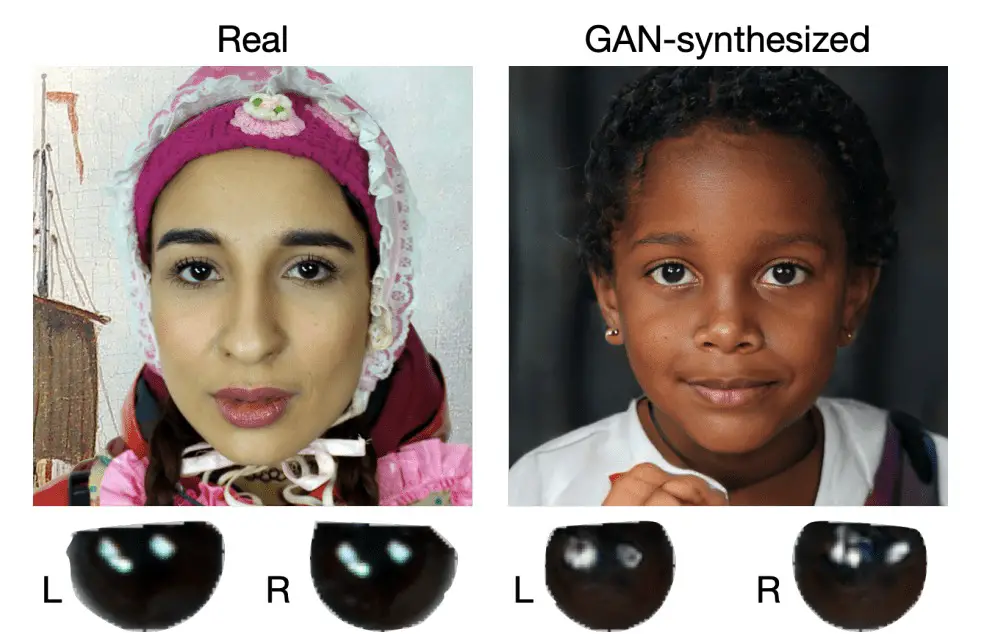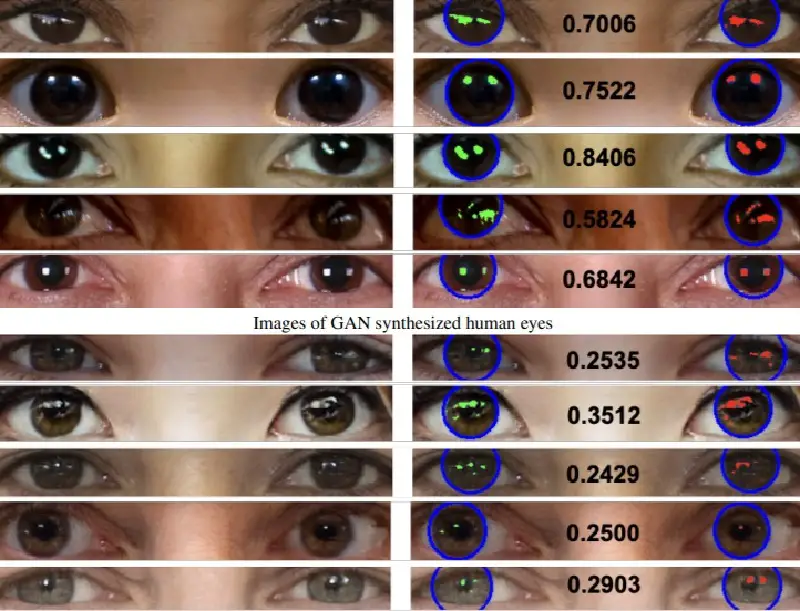Deepfakes are being used for a wide range of purposes, including in the context of disinformation campaigns, and it’s getting harder to detect those edited images.
How does this AI detect Deepfake images?
But there’s a new AI tool to spot those fake videos, it checks the light reflected in the eyes.
The project has been created by a team of computer scientists from the University at Buffalo. According to the study, this new AI was able to detect Deepfake portrait images with a surprising 94% success rate.
The system exposes the fake images by analyzing “the inconsistent corneal specular highlights between two eyes.”
When we take a picture of a real face, the reflection on the two eyes will be similar. Because they’re seeing the same thing. But generally, Deepfake images fail to accurately capture this resemblance, thus are unable to capture the true likeness of the person they are attempting to imitate.

The system analyzes the image and then calculates a score that is used to determine the similarity of one person to another.
The most obvious drawback to the tool is that it requires a reflected source of light in both eyes. These patterns can be easily corrected using manual post-processing and the method won’t work if one eye is missing from the image.
Also, the system is likely to produce false results when the person in the picture isn’t looking at the camera.





